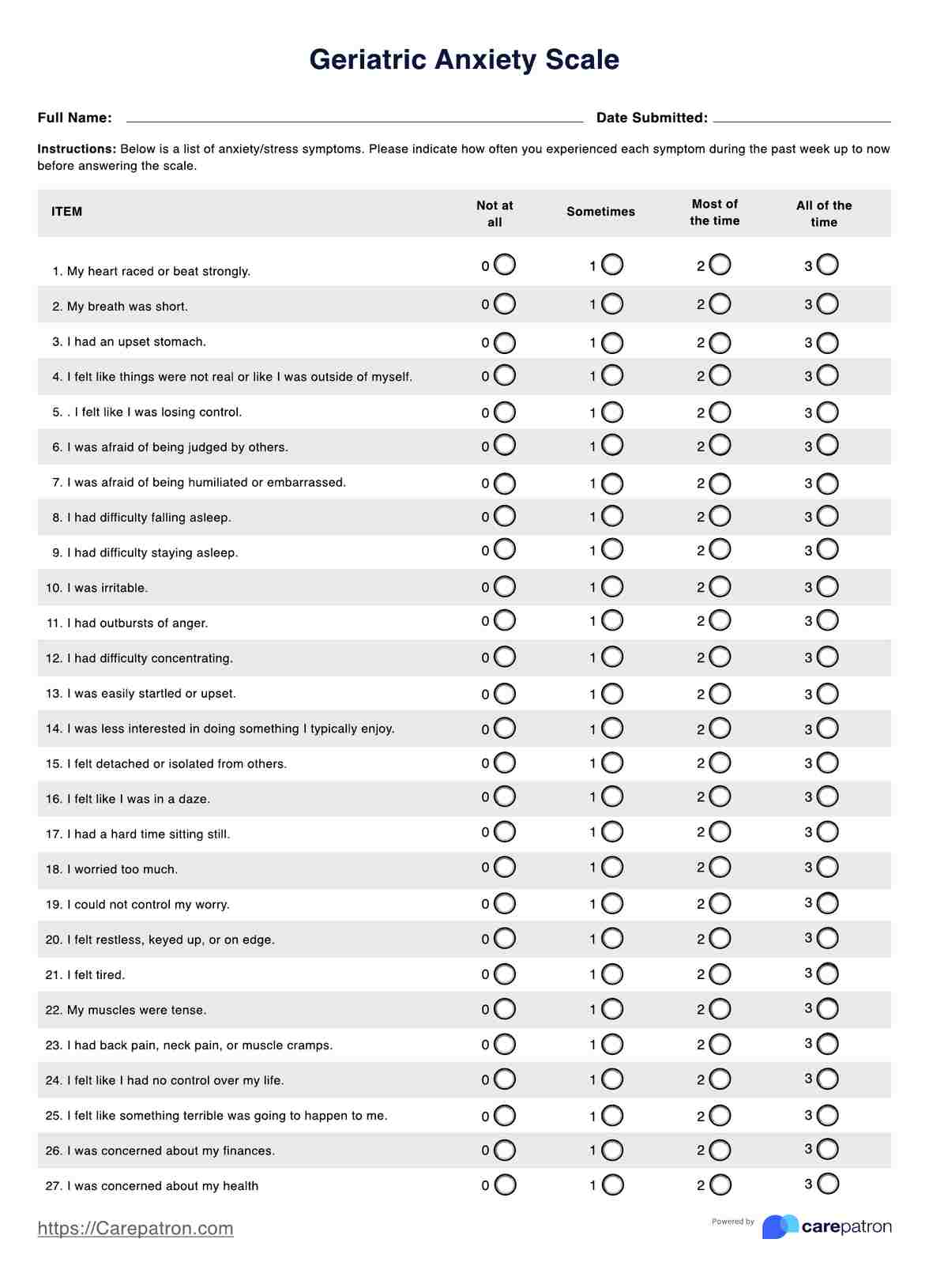The time to complete the Geriatric Anxiety Scale varies, but individuals typically require about 10 to 15 minutes to respond to the 30 items on the scale. It is designed to be a relatively quick self-report assessment.

Geriatric Anxiety Scale
Issue the Geriatric Anxiety Scale to your geriatric patient to gauge their anxiety symptoms. Learn more about it through this guide.
Geriatric Anxiety Scale Template
Commonly asked questions
No, the Geriatric Anxiety Scale is not a diagnostic tool. It serves as a screening measure, providing valuable information about the presence and severity of anxiety symptoms in older adults. A thorough diagnostic evaluation by a healthcare professional is necessary for a conclusive diagnosis.
While the Geriatric Anxiety Scale is primarily designed for use by healthcare professionals, individuals can still benefit from it. If you are not a healthcare professional, consider sharing the results with your healthcare provider for a more comprehensive assessment and interpretation tailored to your needs.
EHR and practice management software
Get started for free
*No credit card required
Free
$0/usd
Unlimited clients
Telehealth
1GB of storage
Client portal text
Automated billing and online payments











